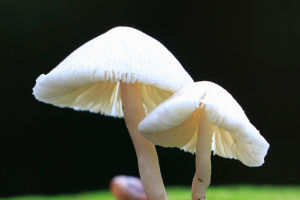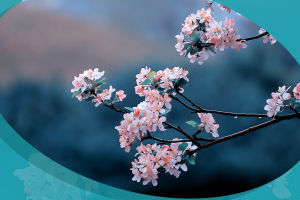Picking up mushrooms as a dish is something many people do when they are in the forest. However, before eating, you must know that some mushrooms are not edible, they are highly poisonous. So, do you know why some mushrooms are poisonous?
This article will take you to learn about the eight most poisonous mushrooms in the world. They are beautiful in appearance but highly poisonous.
1. Destroying Angel
The destroying angel is mainly found in Europe. It has a high homology with the poisonous Amanita bisporus (A. bis Porigera) and A. ocreata in North America. It is highly toxic and deadly.
But it has an extremely unpleasant smell that everyone dare not approach. Symptoms will appear within 8 to 24 hours after eating by mistake, vomiting, diarrhea, extreme thirst, night sweats, and cramps.
After a day, the symptoms will be significantly relieved, and then they will reoccur, and they will be more severe. 90% of those poisoned will die of liver failure within 2 to 10 days.
2. Death Angel
Angel of death, a deadly toxin-laden fungus, is a veritable killer mushroom that is sometimes easily confused with common edible mushrooms.
Angel of Death contains amanitin, which inhibits RNA polymerase and interferes with various cellular functions. Poisoning usually begins in the liver and kidneys and can be fatal within 2 days.
3. Autumn Skullcap
Galerina marginata (aka autumn skullcap) can be found in temperate places around the world. On the surface, it looks like a hallucinogenic fungus of the genus Photocap, but it is actually quite toxic.
Unlike the dark brown or lavender robes in this genus, the spores of A. striata are light brown. But it can be tricky to tell the difference, especially since these tiny mushrooms may be growing in the same area.
4. Amanita phalloides
Amanita, commonly known as death cap mushroom, is one of the most poisonous species of poisonous mushrooms known. Amanita is widely distributed in Europe and grows symbiotically in deciduous trees in the form of mycorrhizae.
In some cases, amanitas have been accidentally spread into new environments by planting non-native tree species such as oak, chestnut and pine. The main toxic substance is α-amanitine, which usually causes fatal damage to the liver and kidneys.
It is said that as long as 30 grams, kidney failure will appear in a short time.
5. Marbled Death Cap
Marble death cap, highly poisonous. The fungus, commonly found in Hawaii, Australia and South Africa, is in the same genus as the death cap and also contains amanitin.
This umbrella-shaped fungus often grows in evergreen trees and eucalyptus forests, but is an exotic species.
6. Hooded False Morel
Hooded False Morel, a brown saddle mushroom that people may confuse with a delicious, edible mushroom that must be cooked before eating. Hooded False Morel contains the toxin gyromitirin, which the body converts to methylhydrazine, one of the ingredients in rocket fuel.
Hooded False Morel may not be as deadly as other mushrooms when eaten in the stomach, but as time goes on, it will gradually have harmful effects on the human body. It is a serious carcinogen and will have a great impact on the human body.
7. Gyromitra esculenta
Gyromitra esculenta, widely distributed in Europe and North America. It emerges in spring and early summer and generally grows in sandy soils under conifer trees. Eating this fungus often causes gastrointestinal discomfort and even coma.
Although it is a poisonous and inedible fungus, it is still a popular delicacy in Scandinavia, Eastern Europe, and the northern part of the five major lakes of North America.
8. Fly Agaric
Fly Agaric, which is it in the game Super Mario, this mushroom is most famous for its hallucinatory toxicity. The edge of Fly Agaric has obvious short ribs, the surface is bright red or orange, and there are white or yellowish granular scales.
Gills pure white, dense, free, unequal in length. Flesh white, red near the epidermis of the lid. Symptoms include severe nausea, vomiting, abdominal pain, diarrhea, and mental confusion, sweating, chills, muscle twitching, slow pulse, difficulty breathing or trismus, dizziness, and confusion.


